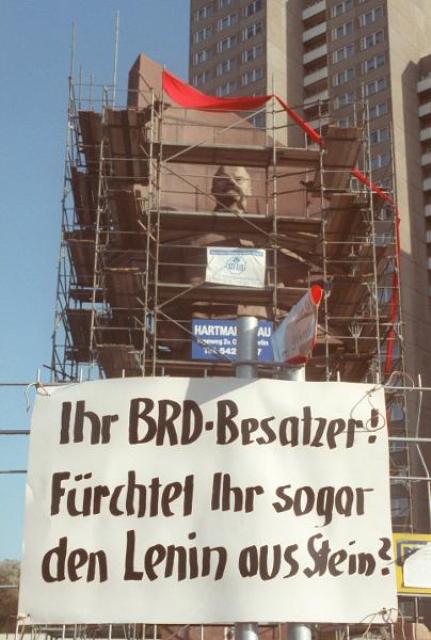Source

Source: picture-alliance / ZB (c) ZB – Fotoreport
On April 19, 1970, three days before Lenin’s 100th birthday, a 19-meter-high statue of Lenin was unveiled on Lenin Square in Berlin-Friedrichshain. The statue was made of red Ukrainian granite and had been designed by Soviet sculptor Nikolai Tomsky. Commissioned by the Central Committee of the SED, the monument was supposed to express East Germans’ reverence for and gratitude toward Lenin. After the democratic transformation of 1989/90, a good deal of discussion focused on dealing with the leftover symbols of the SED regime – under consideration was the fate of more than 800 monuments in East Berlin alone. In October 1991, Berlin’s Senator for Urban Development, Volker Hassemer (CDU), took the Lenin statue off the list of protected monuments, thereby ensuring its demolition. In doing so, he acted against the wishes of local residents who had petitioned for the statue's preservation. In justifying his decision, Hassemer argued that the monument stood for the cult of personality and for subjugation under a dictatorship. His critics, on the other hand, argued that the statue was part of the history of the neighborhood and that it fit within the larger architectural ensemble on Lenin Square. (The square was later renamed “United Nations Square.”) The protest poster shown here slanders West Germans as “occupiers” and insinuates that they feared Lenin’s symbolic power: “You FRG occupiers! Are you even afraid of this Lenin made of stone?”

Source: picture-alliance / ZB (c) ZB – Fotoreport